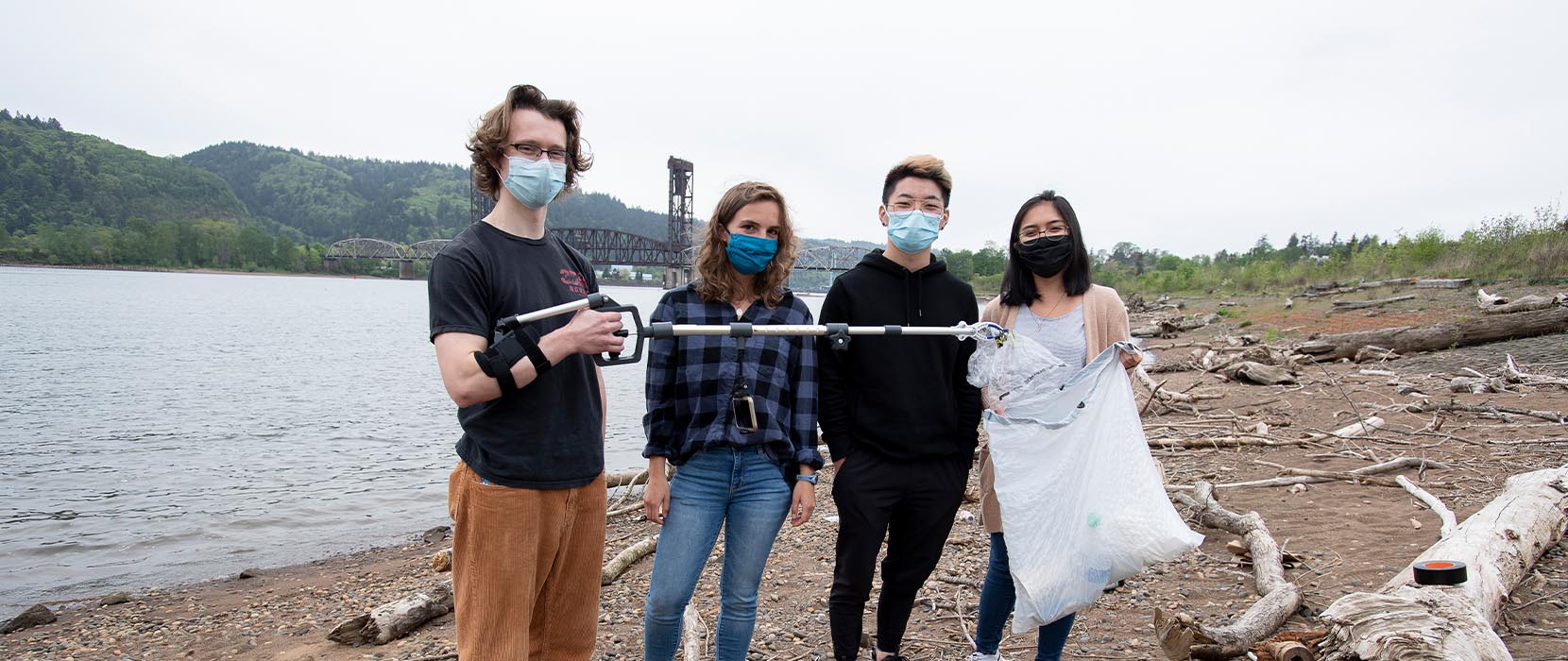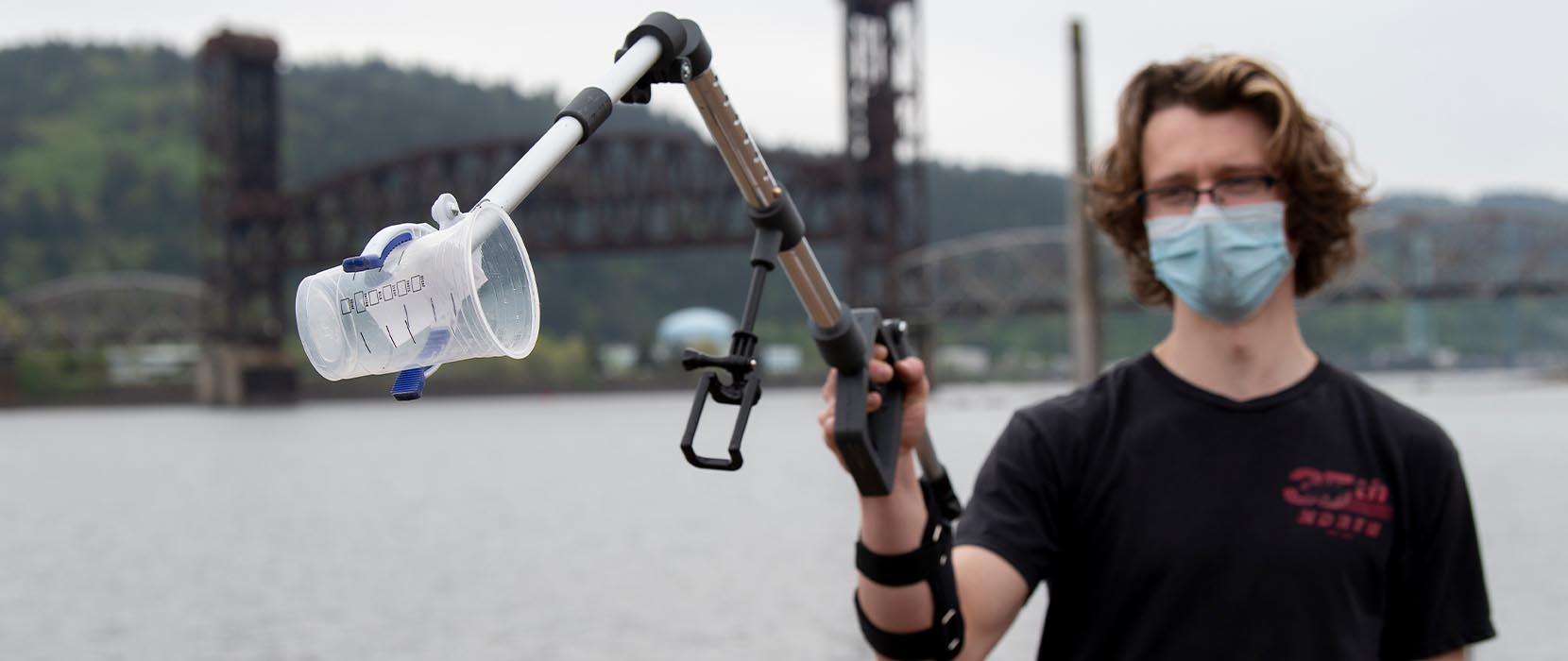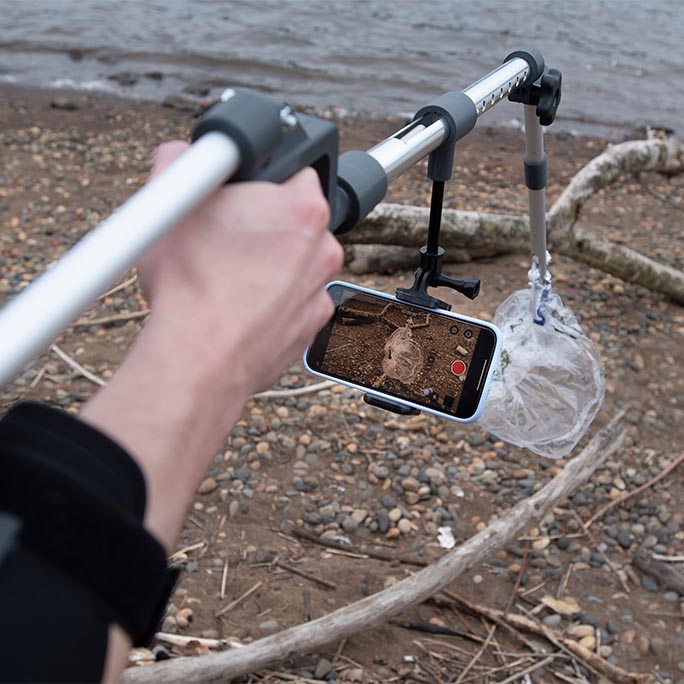Summer 2021
Student Engineers Tackle Shoreline Trash
In response to questions from neighbors, University of Portland engineering students designed a new ergonomic litter-grabber.
- Story by Danielle Centoni

Photo by Bob Kerns
RESPONDING TO THE needs of the world is more than a lofty goal, it’s a core tenet of University of Portland’s mission statement. And this past year, a group of seniors put that mission into practice when they had to completely reimagine their senior capstone project.
The interdisciplinary team of two civil engineers (Olivia Helinski and Nick Kanno), two mechanical engineers (Ben Bishop and Courtney Cadiz), and two computer scientists (Alex Weininger and Samuel Nguyen) was first tasked with building a “marine debris capture device.”
But things got fuzzy when they realized their original idea to create a tool that would skim debris from the shore of the Willamette was both redundant (there are dozens of devices on the market) as well as too ambitious for their timeframe.
“Having something moving in the water with some sort of automation would be a huge undertaking for just us with only a year to work on it, especially with half the team being remote,” says Weininger.
So, they started over completely from scratch. This time, though, they started not with an idea, but with a question: What does the world actually need?
“They did months of research, interviews, and outreach with stakeholders along the Willamette River—industry, nonprofits, riverfront property owners,” says the team’s advisor, Shiley School of Engineering professor Jordy Wolfand.
The goal was to find out what problems, related to debris in the river, needed a solution. “Many people didn’t respond, but the nonprofits were very interested and excited to talk about this stuff,” says Wolfand.
The team learned that volunteers who pick up litter along the shore are integral to a healthy river ecosystem, because collecting the debris before it hits the water is far more effective than trying to remove it once it’s in there. But volunteers say their biggest problem is the physical exhaustion of using typical litter-grabbers, or “stick-pickers,” as they’re usually called. Volunteers wanted something more ergonomic.

“We wrote down problems we were seeing, like wrist pain, and brainstormed what would fix it,” says Helinski, the team leader. “Then we picked the top three features it should have: a forearm rest to take away the strain on the wrist, a bend in the stick for better aim, and an adjustable length for people of different heights.”
Their redesigned stick-picker prototype would make it physically easier to pick up trash, but that solves just half of the problem. Turns out, researchers who study pollution need better tools to track where debris is coming from, when, and why, so they can find ways to stop the trash at its source. (If they find patterns—say, more trash on the farmer’s market day, for instance—they could see if the farmer’s market needs more trash cans.)
There are additional challenges to tracking trash along a body of water. “We were doing research over the summer on plastic pollution, and we realized it’s hard to track debris because it moves,” says Helinski. “There’s a lot of unanswered questions and a lot of people looking to develop AI (artificial intelligence) debris tracking.”
To make the tracking process easier, the team decided to outfit the stick-picker with a mount for a smart phone, so users can easily take pictures of the trash they pick up. Weininger and Nguyen then set to work creating software that can use the pictures to automate the process of cataloguing and mapping the trash. The pictures provide information on the type of trash, location, and date it was found, and the software transfers that information to the students’ database and mapping tool.
 The team hopes the device and the software technology will get picked up by another capstone team next year and refined, maybe even making it onto the market someday, so environmental stewards will have a better tool in their fight against water pollution.
The team hopes the device and the software technology will get picked up by another capstone team next year and refined, maybe even making it onto the market someday, so environmental stewards will have a better tool in their fight against water pollution.
More Stories
Neighbor to Neighbor
A social work major at UP, Tara Benavente tends to jump in wherever she sees a need. “I’ve always had a heart for working at the margins,” she says.